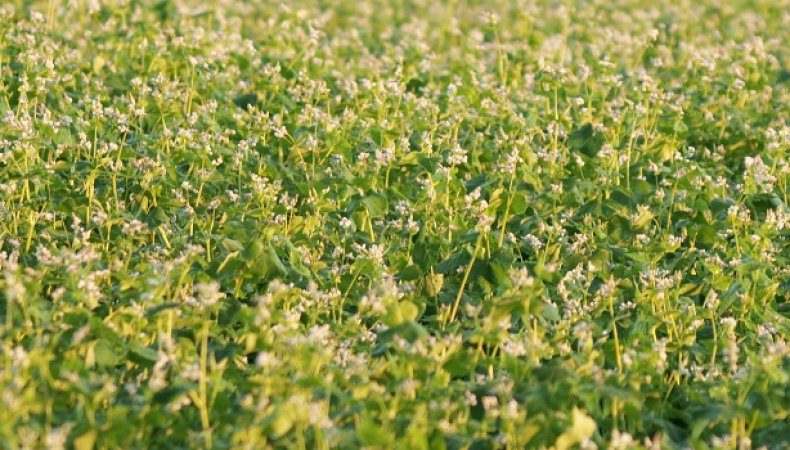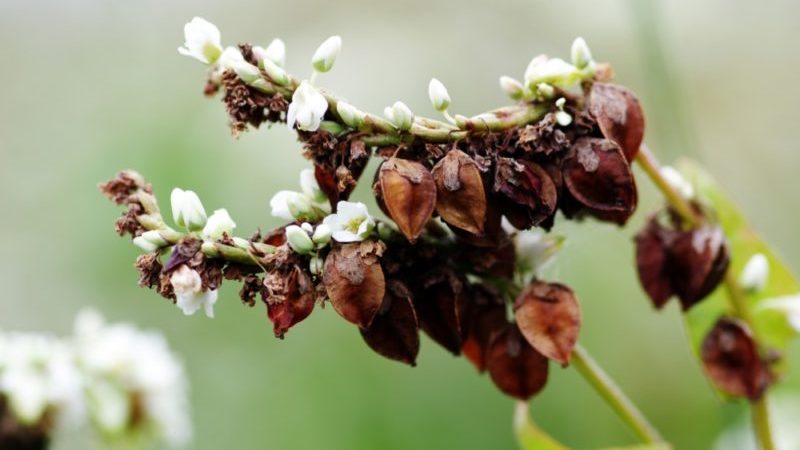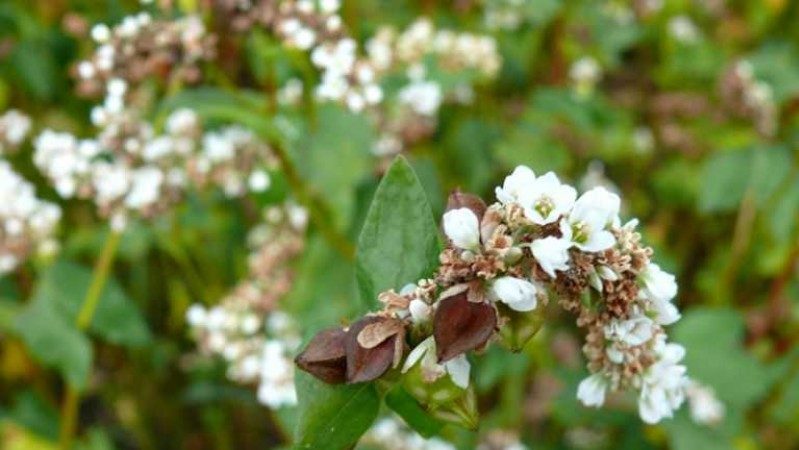Varieties of buckwheat varieties, their description and characteristics
Buckwheat is an important industrial culture in Russia. The famous buckwheat is obtained from it and flour... It is mistakenly believed that buckwheat is a grain crop, while it belongs to a completely different family. It is represented by several species - wild and cultivated. The latter, in the process of selection, acquired new properties and characteristics that are most beneficial for agriculture.
From the article you will find out what varieties of culture exist, what a diploid variety of the determinant type is, and get acquainted with the popular varieties of buckwheat.
The content of the article
Varieties of buckwheat varieties
Buckwheat - a plant from the Buckwheat family - is divided into several types:
- Buckwheat tatar occurs in the wild, as a cultivated plant in Asia and the United States.
- Common buckwheat, or sowing, - the main species from which varieties of cultivated crops were derived on an industrial scale in Russia. For industry, diploid and tetraploid variants are cultivated, in which the number of chromosomes is increased.
In the Soviet Union, buckwheat was divided into two types - kernel and done... Now this classification is also valid, but the new standard (GOST R 55290-2012) added the concept of the highest grade to it. Such cereals are produced by many manufacturers, for example, the National group of companies.
How many varieties of buckwheat exist is difficult to say for sure. We will describe the most popular ones.
Diploid varieties
Diploid varieties are close to wild forms, but they have doubled the number of chromosomes. This was done to increase the yield and resistance to external factors.
Vlada

An upright plant with a dense ribbed stem, about 1 m high. The leaves are bright green, covered with silvery pubescence, triangular at the base of the stem, at the top they turn into narrow, arrow-shaped ones adjacent to it. Inflorescence is a raceme with small light pink or milky pink flowers. The fruit is an elongated dark brown trihedron.
The growing season is 83-85 days.
Average yield - 16.4-17.8 c / ha, maximum - 28 c / ha.
Dikul
Buckwheat variety Dikul is erect, similar to the previous one in morphological characteristics. Stem 90-95 cm high, green along the entire length. Leaves are cordate or triangular, saturated green, there is a weak short pubescence. Inflorescence - brush or scutellum, flowers are small, white-pink. The fruit is medium in size, elongated-triangular, with three edges, uniform brown color.
The growing season is 80-85 days.
Average yield - 14.1-16.5 c / ha, maximum - 25.8 c / ha.
Carmen

An upright variety, the stem is hollow, dense, with a short silvery downy, 80-86 cm high. The leaf is green, cordate, narrow at the apex, elongated, without pubescence, with a weak matt waxy coating. Inflorescence is a brush, located on long pedicels. The flowers are medium-sized, pinkish-white or pale pink. The fruit is a diamond-shaped trihedron with a pronounced dark brown color.
The growing season is 75-80 days.
Average yield - 16.7-17.3 c / ha, maximum - 24.7 c / ha.
Sapphire
The variety has a hollow, erect, ribbed, geniculate stem 70-75 cm high. The leaves are medium-sized, rich green, heart-shaped, sessile at the top of the stem, wavy. They have no pubescence and wax bloom. Inflorescence is a raceme on a long peduncle with small pinkish flowers.The fruit is triangular, diamond-shaped, with a warm brown hue.
The growing season is 77-82 days.
Average yield - 22.5-23.0 c / ha, maximum - 42.6 c / ha.
Tetraploid varieties
Tetraploid buckwheat has a triple set of chromosomes. Differs in productivity and large caryopses with a high protein content, is not prone to shedding and is resistant to environmental factors.
Alexandrina

Medium-sized variety up to 90 cm high with a hollow ribbed stem. The leaves are cordate at the base, arrow-shaped at the apex, bright green in color, without wax coating and pubescence. The inflorescence is a scutellum on a long peduncle with large, pale pink flowers. The fruit is an elongated dark brown trihedron.
The growing season is 86-88 days.
Average yield - 17.5-18.1 c / ha, maximum - 32.7 c / ha.
Or me
An upright variety with a ribbed, empty stem of a reddish-green color. The leaves are large, green, triangular at the base, arrow-shaped to the top of the stem, without pubescence and bloom. Inflorescence is a raceme with large flowers of light pink color. The fruit is large, diamond-shaped with three edges, dark brown over the entire surface.
The growing season is 85-90 days.
Average yield - 17.5-18.5 c / ha, maximum - 33.2 c / ha.
It is interesting:
Lena
Erect plant, stem is hollow, ribbed, 90-95 cm high, light green along its entire length. The leaves are large, green, cordate and wavy, without pubescence. Inflorescence is a raceme with a long peduncle; flowers are small, pinkish or pinkish-white. The fruit is large, diamond-shaped with three sides, brown or light brown.
The growing season is 90 days.
Average yield - 12.9-14.1 c / ha, maximum - 25.5 c / ha.
Martha
An upright plant with a hollow ribbed stem up to 110 cm high. The leaves are adjacent, gray-green or green, without pubescence and bloom. Inflorescence is a raceme with large pale pink flowers. The fruit is a triangular brown rhombus with whitish edges.
The growing season is 95-100 days.
Average yield - 18.4-19.1 c / ha, maximum - 41.8 c / ha.
Reference. When sowing, the variety requires isolation from the diploid.
Determinant and indeterminate varieties
Since buckwheat is initially characterized by excess growth, breeders began to look for ways to direct this property in the direction necessary for agriculture. Determinant varieties have been bred that have a genetically inherent growth limitation. This is due to the appearance of three clusters of inflorescences, in which growth processes take place.

These varieties include:
- Lena;
- Carmen;
- Dialogue;
- Nine;
- Pace;
- Design;
- Sumchanka.
The varieties are distinguished by short stems, small leaves and large flowers. Designed mainly for regions with a risk of spring frosts, as they are resistant to cold weather.
Reference. Diploid varieties of the determinant type are distinguished by low growth and a doubled number of chromosomes. Among them are Carmen and Dikul.
Indeterminate varieties are not limited in growth, but have a high content of flavonoids. Plants often exceed 1 m in height, making them less resistant to wind and prone to lodging.
These varieties include:
- Martha;
- Rain;
- Dikul;
- Rumor;
- Ballad.
Wild varieties

In addition to cultivated varieties, several species of wild plants are known, cultivated as cultivated in some regions. These include buckwheat Sakhalin, Tatar, two-breasted.
Tatar buckwheat, or kyrlyk, Is a weed that accompanies the sowing of cereals. It grows in abundance in Altai. It tastes little different from cultivated varieties. Can be cultivated in small areas. Spreading buckwheat damages crops.
Buckwheat double-breasted, or semi-umbellate, is less common. Used in Chinese traditional medicine. Resembles morphologically cultivars.Distributed mainly in China, however, it is found as a weed in regions bordering it. Cultivated in the southern regions of Russia to obtain rhizomes.
Far Eastern buckwheat, or Sakhalin, - a weedy forage plant up to 3 m high. It is grown as an ornamental crop for hedges. It has large leaves and inflorescences with small white flowers. Due to the high content of vitamins, it is used as feed for farm animals.
Conclusion
Currently, both old and new buckwheat varieties are used in agriculture. They use not only the fruits obtained, but also the leaves and rhizomes. Some weedy species serve as a good food base for farm animals.